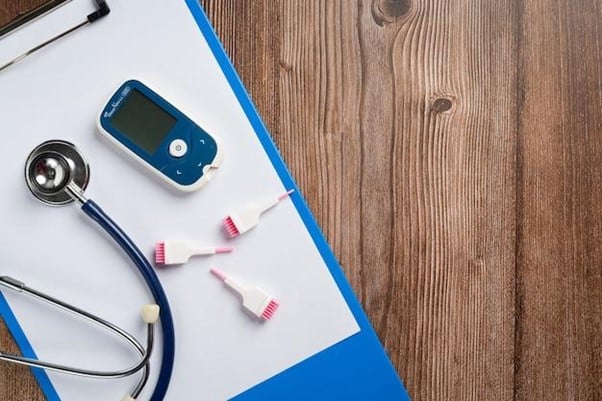Table of Contents
It would be impossible to pretty much overemphasize the importance of proper blood sugar regulation in the human body. There are several strategies, which can be used to address the issue of high glucose levels for a beneficiary. One more important aspect is to emphasize crucial points describing each method, as people should know them to make the right choices.
Dietary Approaches
Diet is one of the most effective approaches to managing or boosting blood sugar levels. The food that we put in our body can in fact influence the glycemic levels. Some foods are balancing foods where you can stay charged for a rather long time while other foods will cause you to feel energized for a short while and then you start feeling tired.
1. Balanced Meals:
It is prudent to combine all macronutrients in a meal or across the day meals. The rest macronutrient that will be consumed will be lean protein, good fats and complex carbohydrates as these are the kind of foods that will prevent the glucose level from dipping or rising and causing a blip hence low and steady constant energy.
2. Herbal Remedies:
Consumption of different herbs has been used in the traditional manner to support glucose levels. For instance, cinnamon can boost the rate of insulin and fenugreek seeds can be used to regulate the amount of glucose in the body. There are numerous health websites that have detailed information on the uses and gains that are associated with the use of these herb, you can visit this website to learn more on how to use of these natural products appropriately. Examining such resources can provide techniques and suggestions on how these herbs can be incorporated into food and drinks.
3. Portion Control:
Controlling portion size also makes up another important topic. Essentially, even if you over-indulge in healthy foods, your blood sugar level can spike unnaturally. Awareness of when one begins to eat and when they are done eating is an aspect of portion control, which can be enhanced by conscious eating and the elimination of distractions during eating incidents.
Physical Activity
It is a well-known fact that proper physical exercise helps effectively balance glucose levels. It helps with the rise in the levels of insulin contingency to make cells in the body utilize glucose appropriately. Exercising in varied ways comes with different effects on the body.
1. Strength Training:
It is also essential to include the resistance exercises like lifting weights or exercising with the body weight for the effective glucose control. Muscle mass is recommended for bodybuilding as it helps the body become sensitive to insulin, enabling better glucose absorption.
2. Flexibility and Balance Exercises:
Chronic stress has an effect on glucose levels and thus, a reduction of stress by engaging in some exercise such as yoga and tai chi is advisable. They also have additional benefits of enhancing the overall physical capacity and body condition.
Lifestyle Modifications
To promote good glycemic control, moreover, there are some other lifestyle changes that may be endorsed:
1. Stress Management:
Long term stress causes agitation of stress hormones such as cortisol which also has an effect of raising elevated blood glucose. Some of the stress management strategies include the practicing of mindfulness meditation, practicing of deep breathing, and practice of exercise.
2. Sleep Quality:
Lack of sleep can affect the body and its glucose regulation services. 7 to 9 hours of quality sleep must be obtained for the night’s duration. To address sleep quality, one should go to bed at the same time each night, set up a relaxed sleep environment, and avoid products with caffeine and using electronic devices during the night.
3. Hydration:
However, drinking adequate water is useful for the overall health and may maintain the glucose level too. The optimal beverage of choice is water followed by other recommended options, however they need to choose unhealthy beverages as they raise blood sugar levels unhealthily.
4. Avoiding Sedentary Behavior:
It is useful to know that, after extended periods of inactivity, signs of either high or low glucose levels may appear. Short intervals of break and bringing ourselves to our feet, stretching, and walking around for sometime can be very helpful. This means simple activities such as walking during conversations or avoiding lift use and taking the stairs instead can be useful.
Regular Monitoring
In the process of managing the glucose levels, it becomes significant to monitor them closely. The tracking of trends can assist people in identifying how specific types of food, exercise and any habits have an impact in the blood glucose level. This can be done in a myriad of ways, including the conventional use of lancets and glucose meter to get a blood sample from a fingertip to the new improved glucose monitoring such as the continuous glucose monitoring (CGMs).
Professional Guidance
In line with this, seeking the assistance of health care practitioners can help to develop individualized goals and measures. Healthcare professionals like the registered dietitian nutritionist, nutritionists, or fitness trainers can assist in formulating meal plans that fit the specified wants and requirements. They also are able to give further counseling and modifications depending on the results of the process and the alterations in the condition of the person.
Conclusion
To maintain the levels of glucose in a healthy range requires a complex care that comprises of nutrition, medicine, exercise, dietary supplements, physical activity, improved diet, constant checking of blood sugar levels, and consultations.
People are not the same, these tips need to be applied depending to their reception to ensure that the best outcome is achieved for every person. When people are aware of the various actions they are taking and are willing and able to make the necessary decisions better on the ways of management of their blood sugar levels with an accompanying benefit on their health.


